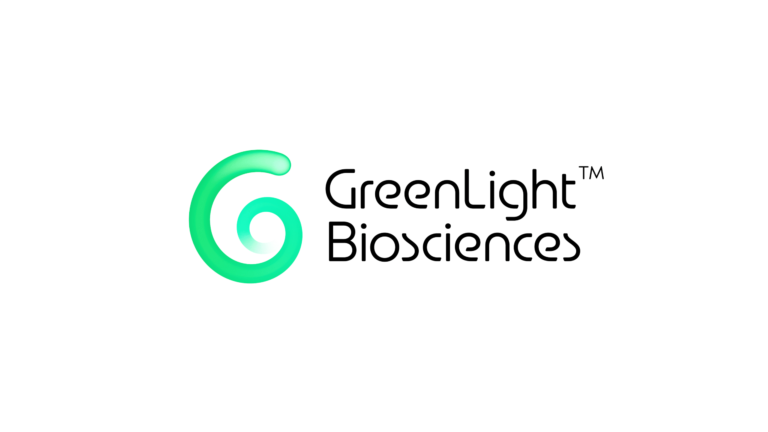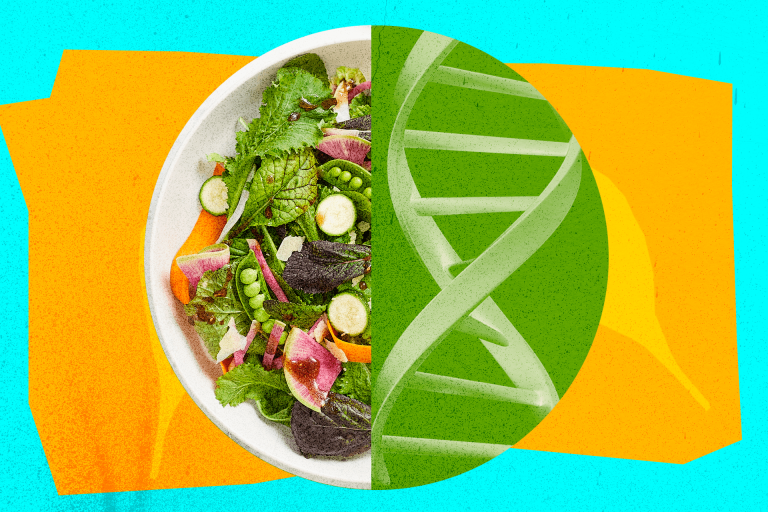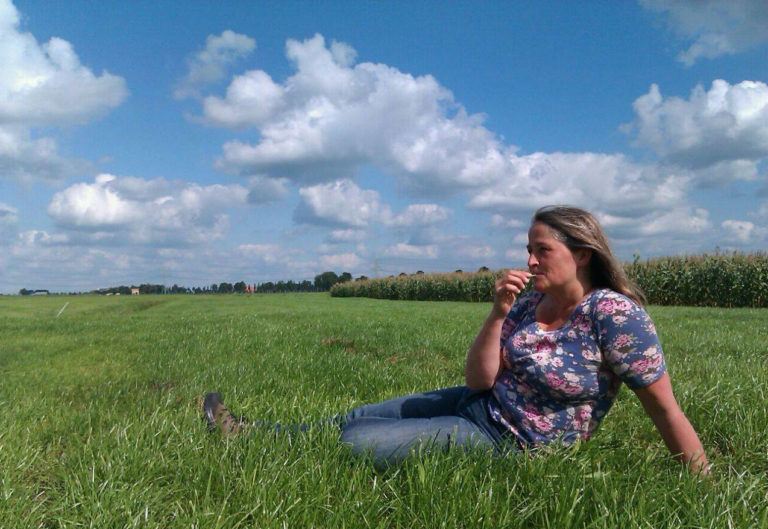News
GreenLight Biosciences or the RNA at every level
After genetic sequences and DNA, here comes RNA, the new flagship molecule in biotechnology that is supposed to solve agricultural and health problems. Companies in this field are flourishing. Among them is GreenLight Biosciences, a company that was on the verge of bankruptcy when it was bought by the investment fund Fall Line Capital.

GreenLight Biosciences is a US company founded in 2008 whose aim, as stated on their website, is ‘to create a safer, more equitable food system using nature. By providing effective and easy-to-use RNA-based products to farmers and beekeepers around the world, GreenLight Bio is working to enable more resilient food production and doing right by the environment.‘1. Its aim is to develop RNA-based products that it hopes to market for use in agriculture, beekeeping but also human health.
There are several versions of RNA-based products. In the agricultural world, RNAi are small molecules which, once ingested by a plant pest, are supposed to kill it. In the medical world, mRNA are used as components of vaccines or in gene therapy.
Numerous RNAi-based biosolutions soon to hit the agricultural market
GreenLight Biosciences is one of the first companies to market products based on RNA interference (RNAi) for the agricultural sector. It markets an insecticide spray against the Colorado beetle, called Calantha. Other products using this technology could come on the market, including insecticides, fungicides and herbicides. For example, its product varroa mites, which are partly responsible for the decline in bee colonies, is currently being examined by the US authorities.
GreenLight Biosciences is also developing an RNAi spray against botrytis, a fungus that can damage grapes, strawberries and tomatoes for example. This spray is currently being tested in fields in the United States. At less advanced stages of development, the company is talking about ‘solutions’ against mildew, Plutella xylostella (the diamondback moth), fusarium (a fungus) and Tetranychus urticae (a mite).
Human health also targeted
In human health, GreenLight Biosciences’ aims at marketing a vaccine against Covid: an application has been submitted to the US authorities. It is also working on a vaccine to protect against zonas (or herpes zoster)2 or cancer. The company has received more than €2.7 million from the Bill & Melinda Gates Foundation to develop gene therapies and ‘to explore new, low cost capabilities for the in vivo functional cure of sickle cell and/or durable suppression of HIV in developing countries’3. With regard to ‘cancer vaccines’ (sic)4, GreenLight Biosciences and Epivax Therapeutics have signed an exclusive collaboration agreement5.
In this medical field, the company uses nanoparticles as a vector for a vaccine messenger RNA: ‘one such delivery system consists of encapsulating mRNA in lipid nanoparticles (LNPs). We work with several established companies that have extensive experience in clinical LNPs for our vaccine candidates. We are able to routinely produce our mRNA-containing LNPs to support our research and development efforts’.6
An international presence
On its website7, the company states that it has carried out more than 100 field trials in the agricultural sector over the last four years. In Europe, it states several countries: Germany, Belgium, France, Spain, the Netherlands and Poland, for a total of 11 trials on this continent8. In Spain, GreenLight Biosciences has set up a subsidiary (registered in the European register of companies under the ‘veterinary’ category9) and, in 2022, it has announced that it is going to lease around 20 hectares to study crop problems caused by powdery mildew, botrytis, fusarium and Colorado potato beetle10. Trials against Plutella xylostella have already taken place in Spain11. In an internal document, GreenLight Biosciences also mentions field trials of RNAi spray, in Italy in 2021, against the Botrytis fungus.
In Africa, GreenLight Biosciences has teamed up with One Acre Fund, an agricultural NGO based in East Africa12 to carry out field trials of ‘biosolutions’ against the Fall armyworm.
In the field of human health, GreenLight Biosciences is also expanding internationally. GreenLight Biosciences has signed a licensing agreement with Serum Institute of India13, which in 2020 produced the largest number of vaccine doses in the world14. ‘Under the agreement, the Indian drugmaker will have access to GreenLight’s technology platform to develop and manufacture up to three messenger RNA-based products, and then commercialise them in markets such as Africa, Latin America, the Middle East and parts of Asia’ the company said. ‘Serum Institute of India will also have the option to extend the licensing agreement to two additional messenger RNA vaccines or therapies’, GreenLight Biosciences15 added. The company has also signed a partnership for the large-scale production of mRNA vaccines with Korea’s Samsung Biologics. GreenLight Biosciences is also trying to establish its Covid vaccine in Africa. It has already obtained authorisation from Rwanda16 and South Africa to carry out clinical trials. In 2021, it initiated a partnership with a scientific research organisation, IAVI, also based in Africa, ‘to accelerate the timeline for manufacturing and deployment of GreenLight’s COVID-19 vaccine candidate to Africa and potentially for export from Africa’17.
Technology purchased from Bayer and a large number of patents
GreenLight Biosciences’ RNAi-based agricultural products were developed following a technology transfer agreement signed with Bayer CropScience18 in December 202019, ’to which [GreenLight Biosciences] acquired from Bayer certain intellectual property rights related to (i) RNA technology used to control Varroa mites, Nosema, and bee viruses, […] and (ii) technology used to control the Colorado potato beetle and canola flea beetle, […]. Under the Bayer Acquisition Agreement, [the company was] obligated to make a closing payment to Bayer equal to $2,000,000 [€1.8 million] as well as certain milestone payments equal to up to $2,000,000 [€1.8 million] in the aggregate, in the event that certain regulatory approvals are achieved with respect to the aforementioned technologies‘20. Bayer is therefore increasing its profits by granting licences, but is not taking the economic risk of developing these RNAi-based ‘biopesticides’ itself. Is the risk too great? If so, would the aim be to disappear behind these start-up screens?
GreenLight Biosciences owned ‘as of March 10, 2023, […] approximately 40 patent families [editor’s note: the term “patent family” refers to patents for specific applications of the same generic patent] in various fields of our business. Of those patent families, approximately six families relate to RNA production; approximately seven families relate to other human health-related technologies; approximately 18 families relate to crop protection and bee health; approximately three families relate to production of sugars; and approximately six families relate to process control and compound production’.
No profits in 14 years
Since its creation in 2008, GreenLight Biosciences has raised at least €216 million to develop its products. Despite investor support, the company wrote at the end of December 2022: ‘We have not generated any product revenues to date and expect to incur losses and negative cash flow for the foreseeable future. We have generated substantial accumulated losses since inception. Our net losses were $167.1 million, $112.3 million and $53.3 million for the years ended December 31, 2022, 2021, and 2020, respectively. As of December 31, 2022, we had an accumulated deficit of $420.6 million [€383 million]“21. And it goes on to say that ‘it is possible we will never generate revenue or profit’. In its 14 years of existence, the company has not generated any profits and has no plans to do so. This does not prevent it from having been valued at 1.5 billion dollars, as we will see.
This economic report prepared by the company for the Securities and Exchange Commission (Form 10-K for the fiscal year ending 31 December 2022) states that the company ‘derived substantially all of [its] revenues through license and collaboration agreements as well as grants and research partnerships with third parties’. Among the licensing agreements, we have already mentioned the one signed in 2022 with the Serum Institute of India22 , as well as the one with Acuitas Therapeutics, Inc.23.
Public fundings are also involved. The European Union (EU) is supporting the company via its Spanish subsidiary, which has received just over 300,000 euros from the EU as part of the ‘NextGenBioPest’24research project. This project gives the company access to the research of numerous European public institutes, including INRAE. In June 2024, the European Investment Bank (EIB) provided €35 million in support for its Spanish subsidiary, which it considered to be in line with the objectives of the Green Deal and the Farm2Fork strategy25.
On 9 August 2021, the company was listed for the first time on the stock exchange via a takeover by the Environmental Impact Acquisition Corp, which was set up solely to raise funds26. At the time, it was ‘valued at 1.5 billion dollars’27. On that day, the CEO of GreenLight Biosciences – whose annual base salary was $575,000 in 2022 – said: ‘We are thrilled to partner with Environmental Impact Acquisition Corp. to accelerate our vision and advance the delivery of our solutions to where they are needed most, with shared goals to pave the way for a sustainable planet through widely available and affordable RNA’. It would appear that the listing in the stock exchange was not enough to turn around the company’s accounts.
Following this merger, GreenLight Biosciences became GreenLight Biosciences Holding, PBC. But two years later, on 30 May 2023, GreenLight Biosciences Holdings, PBC left Wall Street. The company was bought by a group of financiers led by the investment fund Fall Line Capital for $45.5 million (€42.3 million)28. Fall Line’s portfolio includes other biotech companies, such as Guardian Agriculture (which sells input spraying drones), Granular (a subsidiary of Corteva, a leader in agricultural software), Impossible Foods (which markets GMO-derived vegetable steaks), Lithos Carbon (which proposes spreading basalt on fields to capture carbon), Sound Agriculture (which works on soil micro-organisms29), etc30. Fall Line is also an investor in Toulouse-based MicroPep Technologies31. The fund has injected $8.8 million (€8.2 million) in 2022, then $27 million (€25 million) in 202432 and is buying up farmland in the United States, which it calls ‘mineral assets’ on its website…
In its 14 years of existence, the ‘simple’ start-up GreenLight Biosciences has faced nothing but financial losses, despite public and private investment. It is owned by an investment fund which itself invests in many areas of agricultural technology. In the case of GreenLight Biosciences, the much-vaunted benefits to humanity of its products (which are hardly ever marketed) have given way to financial interests…
RNAi, vaccines, GMMs… organic links
Greenlight Biosciences was founded in 2008 by Andrey Zarur33, a senior lecturer at the Martin Trust Center for MIT Entrepreneurship. He has co-founded or managed more than a dozen companies in the health and energy sectors. These include Solid Biosciences, which is working on a gene therapy to treat Duchenne muscular dystrophy, and Lumicell Surgical, which ‘offers advanced imaging solutions for cancer surgery’.
Most of the company’s directors have historic links with multinational companies. For example, Carole Beth Cobb34, one of the directors of GreenLight Biosciences, was vice-president of several major companies from 1999 to 2008, including Genencor International (a subsidiary of Danisco, now IFF) and DuPont Nutrition Biosciences (also IFF), which produce, among other things, micro-organisms (some of them genetically modified), and Cobalt Technologies, which produces agrofuels, also using GMMs35.
In the current board, the presence of former executives from multinationals like Monsanto is no longer visible. But before June 202336 there were Martha Schlicher37 and Ganesh Kishore38, who had worked for Monsanto for many years.
1GreenLight Biosciences’s website : https://greenlightbiosciences.com/our-story/
2Bhattacharya A, Jan L, Burlak O, Li J, Upadhyay G, Williams K, Dong J, Rohrer H, Pynn M, Simon A, Kuhlmann N, Pustylnikov S, Melo MB, Dey AK, « Potent and long-lasting humoral and cellular immunity against varicella zoster virus induced by mRNA-LNP vaccine », NPJ Vaccines, April, 4, 2024.
3Bill et Melinda Gates Foundation, « Committed grants – GreenLight Biosciences : to explore new, low cost capabilities for the in vivo functional cure of sickle cell and/or durable suppression of HIV in developing countries », July 2020.
GreenLight Bioscences, « GreenLight Biosciences Receives $3.3 Million Grant to Develop Sickle Cell Disease Cure Using mRNA Gene Therapy », PR Newswire, September, 15, 2020.
4An important semantic precaution: a vaccine does not cure, it is not a medicine, but it does protect. The expressions ‘cancer vaccine’ or ‘anti-cancer vaccine’ are gradually insinuating that a vaccine cures.
5UNITED STATES SECURITIES AND EXCHANGE COMMISSION, « FORM 10-K : GreenLight Biosciences Holdings, PBC », 2022.
6Ibid.
7GreenLight Biosciences, « Colorado potato beetle trial locations worldwide, 2018-2021 », 2022.
8Annick Bossu, « L’ARN interférent : une face cachée du biocontrôle », Inf’OGM, le journal, octobre-décembre 2024 (under publication)
9European Medicines Agency (EMA), « Greenlight Biosciences España, S.L. », 2022.
10« Greenlight Biosciences Holdings Pbc », Zonebourse.
11UNITED STATES SECURITIES AND EXCHANGE COMMISSION, « FORM 10-K : GreenLight Biosciences Holdings, PBC », 2022.
12Post LinkedIn from GreenLight Biosciences, April 2024.
One Acre Fund has received several million dollars from the Bezos Earth Fund.
See : Bezos Earth Fund, « Bezos Earth Fund Announces $110 Million to Conserve and Restore Nature and Advance Climate Science, Monitoring and Governance », December, 14, 2022.
The NGO also received $11.6 million (€8.8 million) in 2013 from the Bill & Melinda Gates Foundation to significantly increase smallholder adoption of existing and effective technologies, followed by $6 million (€5.5 million) in 2016 and $1 million (€938,000) in 2023.
13It is a subsidiary of the Poonawalla Investment and Industries group.
14Reuters Staff, « Serum Institute to focus on supplying COVID-19 vaccine to India first », Reuters.
15« GreenLight Biosciences et le Serum Institute of India concluent un accord de licence pour développer des produits d’ARN messager », Zonebourse.
16« GreenLight Biosciences décroche l’approbation de la FDA du Rwanda pour l’essai clinique COVID-19 », Zonebourse.
17IAVI, « GreenLight Biosciences (ENVI) partners with IAVI to accelerate COVID-19 vaccine trial in Africa », November, 30, 2021.
18Bayer acquired this varroa mite technology when it took over Monsanto, which in 2012 bought it from Beelogics, an Israeli company (linked to the University of Jerusalem) that owned the patents.
Patent n° US8962584B2, « Compositions for controlling Varroa mites in bees », 2012.
19GreenLight BIosciences, « GreenLight acquires Bayer’s topical RNA Intellectual Property portfolio », May, 20, 2021.
20UNITED STATES SECURITIES AND EXCHANGE COMMISSION, « FORM 10-K : GreenLight Biosciences Holdings, PBC », 2022.
21Ibid.
22Serum Life Sciences, une filiale du Serum Institute of India, avait investit plus de 10 millions de dollars (8,6 millions d’euros) dans GLB en novembre 2021.
GreenLight Biosciences, « Serum Life Sciences invests in RNA biotech GreenLight by joining expanded financing for Environmental Impact Acquisition Corp. », november, 23, 2021.
23Annick Bossu, « L’ARN interférent : une face cachée du biocontrôle », Inf’OGM, le journal, octobre-décembre 2024.
24Commission européenne, « “NextGenBioPest” – Next Generation Biopesticides for the control of the most “difficult-to-manage” pests and pathogens in fruits and vegetables », november, 24, 2024.
25Banque européenne d’investissement, « GREENLIGHT BIO (IEU LS) », June, 6, 2024.
26Investors in ENVI include S2G Ventures, Cormorant Asset Management, Morningside Venture Investments, Hudson Bay Capital, BNP Paribas Ecosystem Restoration Fund, The Jeremy and Hannelore Grantham Environmental Trust, Continental Grain Company, Pura Vida Investments LLC, Xeraya.
« GreenLight Biosciences Announces Business Agreement With Environmental Impact Acquisition Corp. to Become Publicly Traded Company, Allowing It to Better Harness Its Breakthrough Platform to Develop and Produce RNA for Human Therapies and Agriculture », Business Wire.
27« GREENLIGHT BIOSCIENCES : vers une entrée en bourse via un SPAC », Zonebourse, August, 11, 2021.
28US Securities and Exchange Commission (SEC), « Offer to Purchase for Cash All Outstanding Shares of Common Stock of GreenLight Biosciences Holdings, PBC at $0.30 Net Per Share by SW MergerCo, Inc. A wholly-owned subsidiary of SW ParentCo, Inc., an affiliate of Fall Line Endurance Fund, LP », July, 19, 2023.
29This company is also financed by Bayer’s investment unit, Leaps.
Leaps by Bayer page on the company’s website.
30GreenLight Biosciences, « GreenLight Biosciences Enters into Definitive Merger Agreement with Consortium Led by Fall Line Endurance Fund for Go-Private Transaction », Yahoo! finance, may, 30, 2023.
31« Entreprises>Micropep », Maddyness.
32« Fall Line Capital », Maddyness.
33MIT Sloan School of Management, « Andrey Zarur ».
« André Zarur », Zonebourse.
GreenLight Biosciences, « Andrey J. Zarur, Ph.D ».
34« Carol Cobb », Zonebourse.
35The Energy Blog, « Biobutanol – Cobalt Biofuels Raises $25 Million to Accelerate Commercialization of Biobutanol Process », november, 14, 2008.
36« Greenlight Biosciences Holdings annonce la démission de ses administrateurs », Zonebourse, july, 24, 2023.
37« Martha Schlicher », LinkedIn.
38Spruce Capital Partners, « Ganesh Kishore, Managing Partner ».














